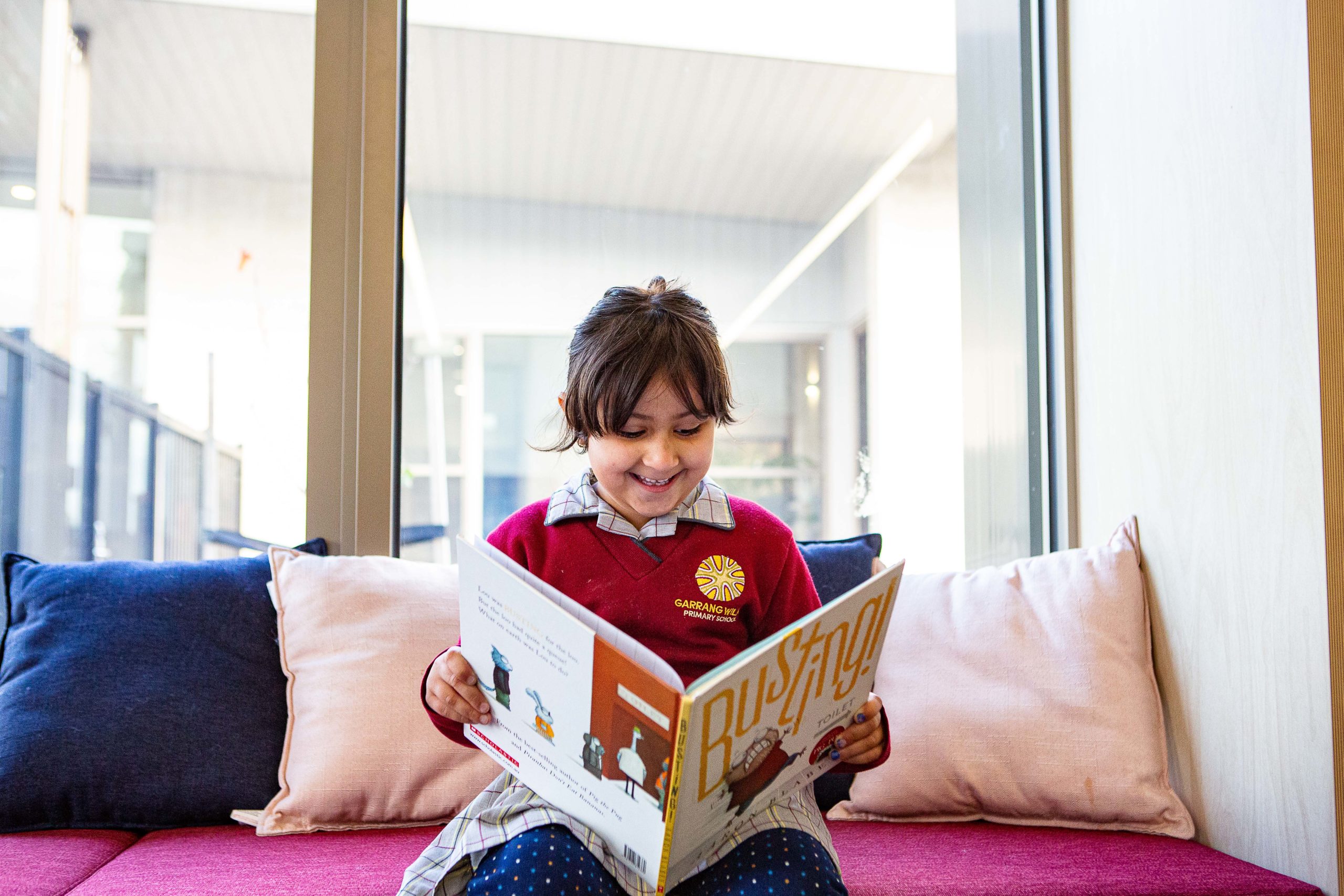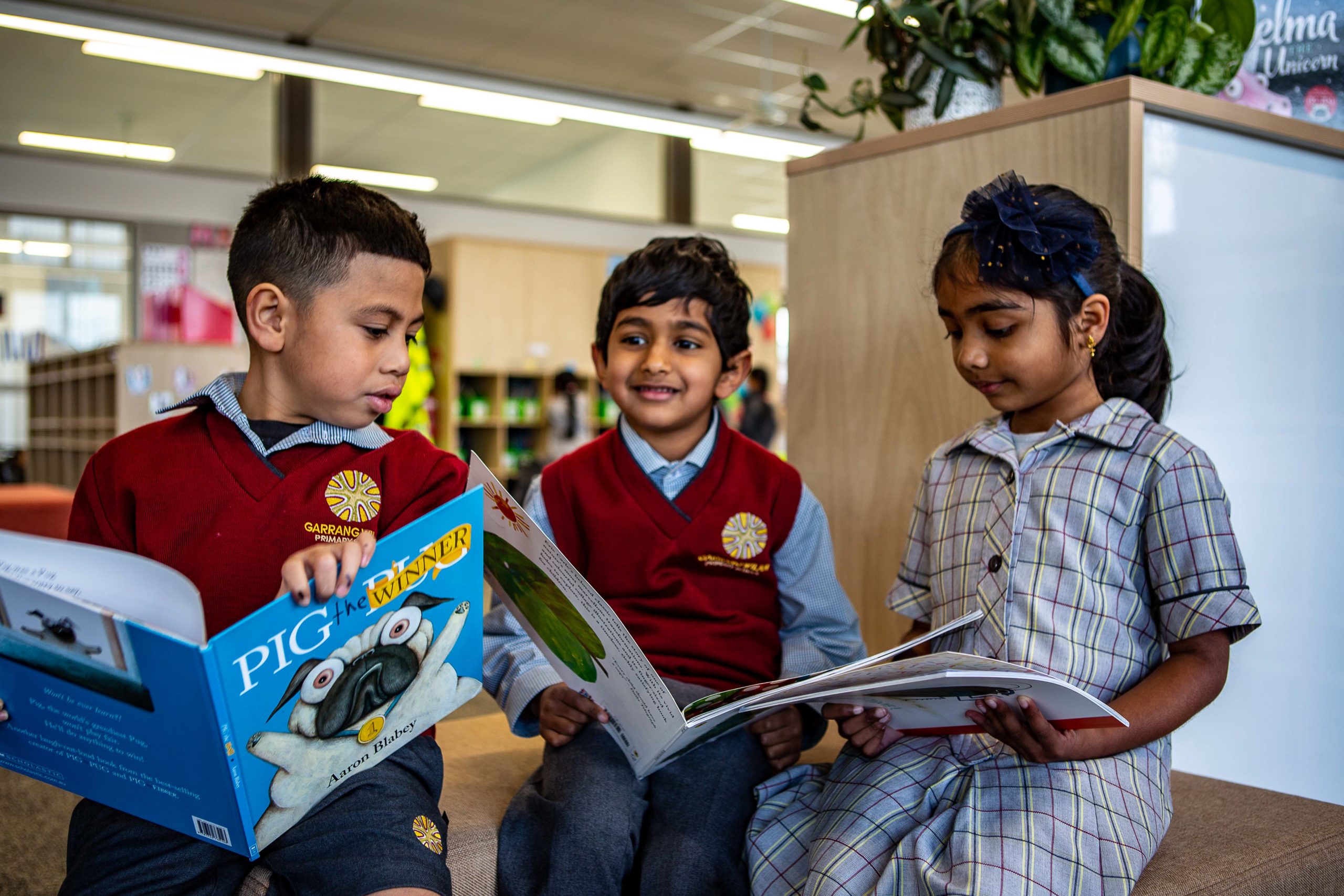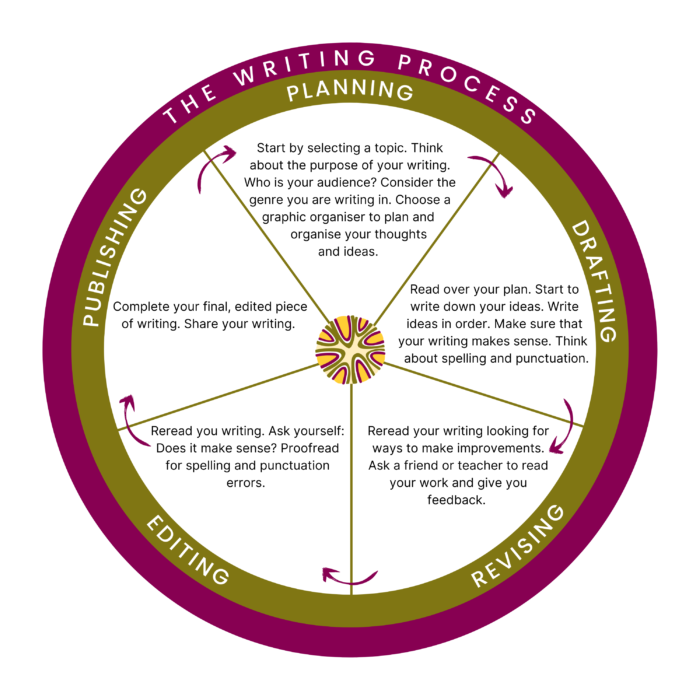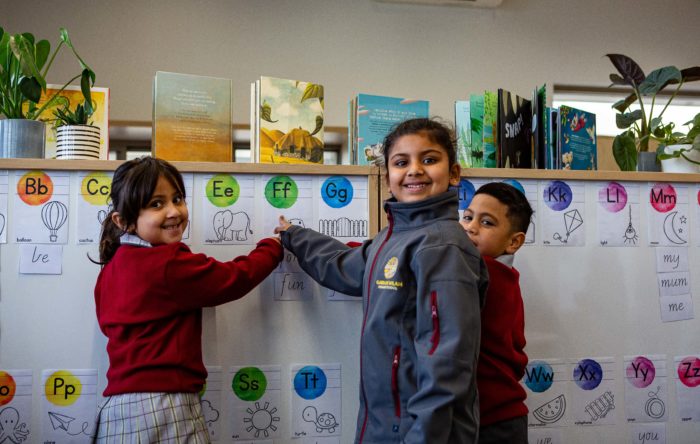Reading
Readers Workshop Model
At Garrang Wilam PS students will be given the opportunity to read for sustained periods each day. Independent reading is an essential component of the Readers workshop model.
This model supports the teaching of reading through a consistent approach. It scaffolds the teaching of reading through core teaching practices including:
Modelled Reading, Shared Reading, Guided Reading, Literature Circles, Close Reading, Language Experience, Reciprocal Reading.
Reader’s Workshop lesson Structure
| Launch: | Used to share/develop the learning intention and success criteria and to build the “need to know” for the lesson. |
| Explicit Teaching: | Teacher shows/models students both WHAT and HOW to do the work during work time. This is demonstrated through shared or modelled reading. A read-aloud could also be used for more able readers. Mentor texts, big books, excerpts, novels, digital texts/viewing could be explored with the students. |
| Work Time: | Students: read, write, and/or talk to work with the content and the learning intention. Teacher: confers with individuals and small groups to learn more about the students and to provide appropriate guidance. The teacher engages with small groups of students in guided reading, reciprocal reading or close reading instruction. The remaining students engage in independent reading and select texts from their book box to practise the strategies modelled in the explicit teaching time. Students record their thinking in the reader’s notebooks. |
| Catch: | A quick, whole-class “time out” from work time to model or share a strategy that will help them re-engage in the work. Planned in advance: to scaffold multiple tasks or texts in a lesson in support of the learning goal. Unplanned: used to clarify confusion, misconceptions or share thinking the teacher noticed while conferring/teaching in the small group opportunity. |
| More Work Time: | Students: read, write and/or talk to make meaning of content and work with the learning intention. Teacher: confers to learn about students, to both individualise and differentiate instruction. Students continue to read independently or join the teacher for small group instruction. |
| Synthesise: | Should include both a share-time and a synthesis of learning with reference to the learning intention and success criteria, |



Writing
Writers Workshop Model
At Garrang Wilam Primary School our Instructional model guides a predictable learning environment to teach writing. The explicit teaching of different genres/text types such as Recounts, Poetry, Information Reports, persuasive and Narratives
Shared and modelled writing opportunities will mirror the pedagogical approach outlined for reading. Small group and individual conferencing will be an essential component of all writing lessons.
Quality Mentor texts will be used as exemplars during explicit teaching opportunities.
A writing session typically comprises of the following: a mini-lesson – where the writing strategy or genre is introduced, a collaborative activity (turning and talking) and an independent activity such as independent writing, partner writing or a writing group. There is an opportunity at the end of each lesson for the students to share their thinking with the class and for the class to reflect on their learning.
Students are provided with opportunities to be explicitly taught skills of writing based on the 6+1 writing traits. Teachers provide opportunities for students to write for authentic purposes and audiences and inspire students to write for pleasure and the joy of expressing their ideas.
Writer’s Notebook
A writer’s notebook is a tool our students use to record the things they notice, observe and think about. Entries can be any variety of ideas. Some examples are memories, observations of things happening around them, wonderings, family stories and other passions. Children write best about things that are important to them. It is writing that comes from what they know and what they have experienced.
The Writing Process and 6+1 Traits of Writing
- Ideas and Content: Ideas should be presented clearly and developed fully with insightful ideas
- Organisation: Writing should be organised logically and be easy to follow
- Word Choice: Precise and effective word choice adds clarity to writing
- Sentence Fluency: Sentences should be varied and effective in sound and purpose
- Voice: this is the personality and conviction of the writer showing through words.
- Presentation: How does I look? How does presentation affect readability?
- Conventions: Spelling, mechanics, usages, agreement are all conventions of writing. Too many errors in conventions impair readability.

Writers Workshop Lesson Structure
| Launch/seed: | Are used as inspiration to plan and record their thinking to decide what message they want to convey and how. |
| Explicit Teaching: | Are short and focused for approximately 10 minutes. The teacher seeks to inspire and instruct the students as writers. A mini-lesson might focus on something the students are struggling with, or introduce strategies that the students can employ in their own writing. During the mini-lesson, the teacher connects the day’s teaching to the ongoing work that the students have been doing and they explain the Learning Intention and Success Criteria. Students can use their writer’s notebook as a guide for inspiration. |
| Work Time: | Students work independently on their written pieces. Different structures and supports are in place to ensure students get support from their teacher or peers. The teacher confers with individuals and small groups to learn more about the students and to provide appropriate guidance. |
| Guided conferences: | The teacher might gather small groups of 4-6 students who have a similar need and provide additional structure and support. |
| More Work Time: | Students may confer with a peer to support their written pieces. |
| Synthesise: | Should include both a share-time and a synthesis of learning with reference to the learning intention and success criteria. |

